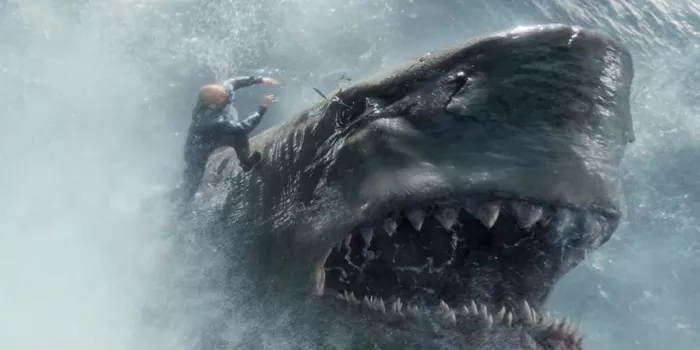The classification of Steven Spielberg’s iconic film “Jaws” has sparked debate among film enthusiasts, critics, and audiences alike for decades. Is it a horror movie or a thriller? This question probes into the heart of genre categorization within the realm of cinema. “Jaws” is a film that straddles the line between these two genres, blending elements of suspense, fear, and tension. To comprehend its classification, one must dissect the characteristics of horror and thriller genres, delve into the film’s narrative, and explore its impact on audiences.
Defining Horror and Thriller
Before delving into the specific genre of “Jaws,” it’s crucial to understand the defining traits of both horror and thriller films. Horror typically emphasizes fear-inducing elements, aiming to terrify and shock audiences. It often involves supernatural or paranormal entities, gruesome violence, and psychological terror. On the other hand, thrillers focus on suspense, tension, and anticipation, often involving intense plots, unexpected twists, and a sense of impending danger.
When contemplating whether “Jaws” fits the horror or thriller mold, one must consider its narrative, thematic elements, and the emotional responses it elicits from viewers.
Narrative Elements in “Jaws”
“Jaws” tells the story of a seaside town terrorized by a great white shark. The film follows Police Chief Martin Brody, marine biologist Matt Hooper, and seasoned shark hunter Quint as they embark on a dangerous quest to hunt down the man-eating shark. The narrative builds tension through the shark’s attacks on unsuspecting beachgoers and the subsequent efforts to capture it.
The film employs classic horror tropes such as the fear of the unknown, a relentless and seemingly unstoppable antagonist, and moments of shock and suspense. The ominous presence of the shark lurking beneath the ocean’s surface creates a palpable sense of dread. These elements align with the typical conventions of a horror movie, inviting audiences to fear the monstrous creature and its unpredictability.
However, “Jaws” also integrates elements commonly found in thrillers. The plot is driven by suspense and anticipation as the characters confront the imminent threat posed by the shark. The film masterfully builds tension through skillful pacing, amplified by John Williams’ iconic score, heightening the audience’s anxiety. Moreover, the story’s focus on the characters’ strategic and calculated attempts to outwit the shark aligns with the thriller genre’s emphasis on suspenseful action and high stakes.
See Also: What is the Oldest Disney Movie?
Emotional Responses and Audience Impact
One significant aspect to consider when determining the genre of a film is the emotional response it evokes from audiences. “Jaws” elicits a wide range of emotions, including fear, suspense, and adrenaline, contributing to its timeless appeal. The iconic scenes, such as the opening attack and the tension-filled hunt for the shark, leave an indelible mark on viewers, eliciting visceral reactions.
The horror elements in “Jaws” are evident in the way it taps into primal fears. The fear of the unknown lurking beneath the water’s surface, the helplessness of the townspeople against a relentless predator, and the visceral nature of the shark attacks all contribute to a sense of terror.
Simultaneously, the film’s thriller aspects shine through in the gripping sequences that keep audiences on the edge of their seats. The cat-and-mouse game between the characters and the shark, coupled with the escalating tension, mirrors the conventions of a thriller, where the anticipation of the next move holds viewers in suspense.
Impact on Film Genre Conventions
“Jaws” occupies a significant place in film history for its groundbreaking impact on genre conventions. Its success revolutionized the way Hollywood approached summer blockbusters and paved the way for the modern blockbuster era. However, its genre-defying nature also challenged traditional genre boundaries.
The film’s ability to blend horror and thriller elements seamlessly has influenced subsequent movies, blurring the lines between genres. Filmmakers have often drawn inspiration from “Jaws,” incorporating its effective use of tension, suspense, and fear-inducing tactics into various genres, leading to the evolution of hybrid genres that borrow from both horror and thriller elements.
Directorial Vision and Cinematic Techniques
Steven Spielberg’s visionary direction plays a pivotal role in the ambiguity of “Jaws'” genre classification. His mastery in crafting suspenseful sequences, using cinematography to create tension, and employing a chilling musical score all contribute to the film’s ability to straddle between horror and thriller.
Spielberg’s skillful manipulation of suspense and terror through carefully orchestrated scenes, such as the underwater shots from the shark’s perspective or the haunting use of silence before an attack, showcases his ability to instill fear and unease in audiences, reminiscent of classic horror techniques.
Furthermore, Spielberg’s emphasis on character development and the psychological aspects of fear aligns with the nuances often associated with thriller films. The film’s focus on the emotional journey and psychological impact on the characters adds depth to the narrative, transcending the mere frights associated with horror.
Critical Reception and Interpretations
The critical reception of “Jaws” further emphasizes its ambiguity in genre classification. While some critics lean toward categorizing it as a horror film due to its terrifying elements and ability to evoke fear, others argue that its focus on suspense, action, and character dynamics align more with the thriller genre.
The diverse interpretations and analyses of “Jaws” highlight its multifaceted nature, prompting discussions about the fluidity of genre boundaries in filmmaking. The film’s ability to evoke distinct emotional responses from viewers contributes to the ongoing debate about its definitive genre classification.
Cultural and Societal Impact
Beyond its cinematic influence, “Jaws” has left an enduring mark on popular culture and society. The film’s release in 1975 sparked a widespread fear of sharks, leading to a phenomenon known as the “Jaws effect.” Beach attendance decreased, and shark hunting surged, reflecting the powerful impact the film had on public perception and behavior.
Moreover, “Jaws” initiated a shift in the way movies are marketed and released. Its success during the summer months redefined the concept of the summer blockbuster, shaping the industry’s approach to film distribution and marketing strategies.
Conclusion
In conclusion, the debate over whether “Jaws” is a horror movie or a thriller underscores its complex nature and enduring legacy. The film’s ability to blur genre boundaries, weaving together elements of horror and thriller, has contributed to its timeless appeal and influence on cinematic storytelling.
“Jaws” stands as a testament to Steven Spielberg’s directorial prowess, captivating audiences with its suspenseful narrative, terrifying moments, and memorable characters. Its impact on genre conventions, cultural influence, and ability to evoke a range of emotions solidify its place as a cinematic masterpiece that defies easy classification into a single genre.
As audiences continue to revisit and analyze “Jaws,” its genre-defying qualities will ensure its status as a film that transcends traditional genre limitations, continuing to captivate and terrify audiences for generations to come.

























